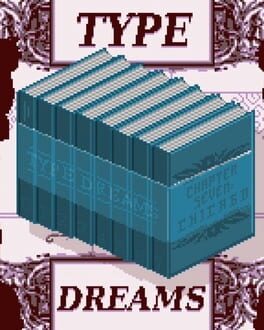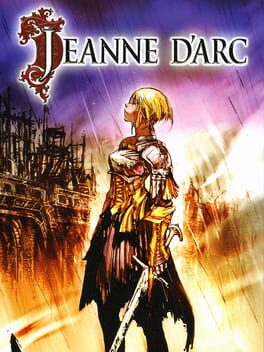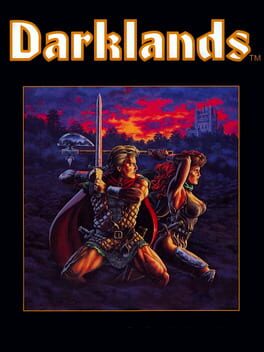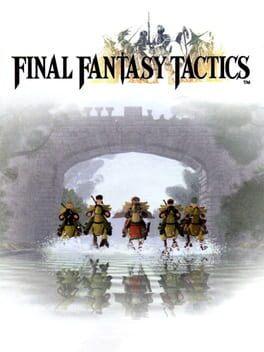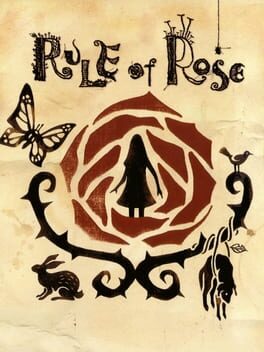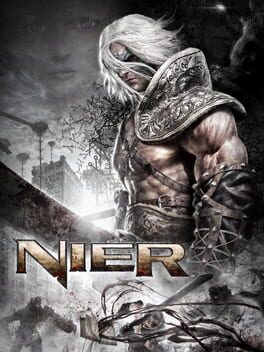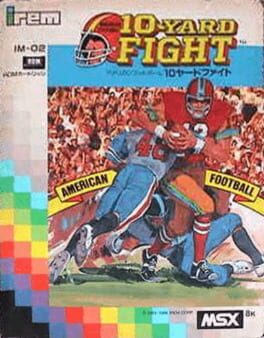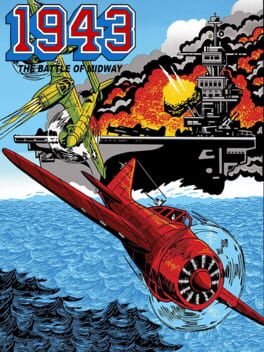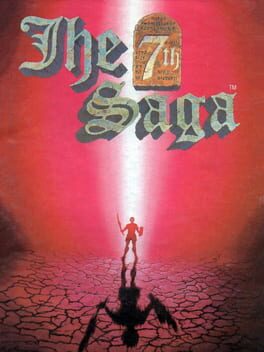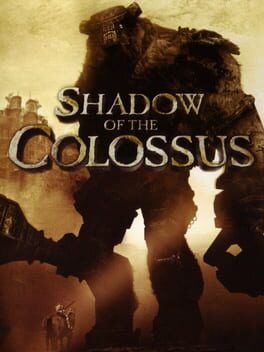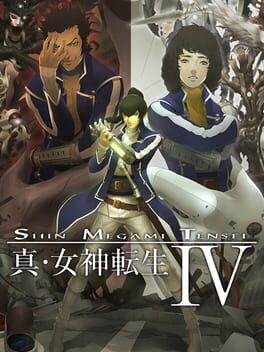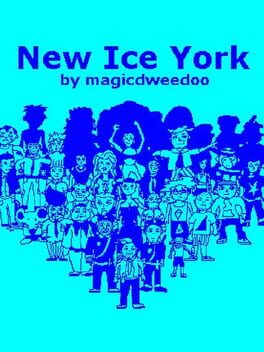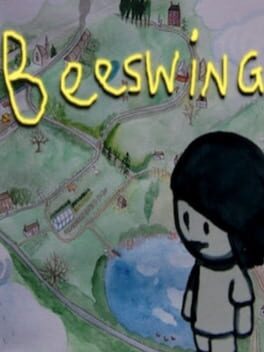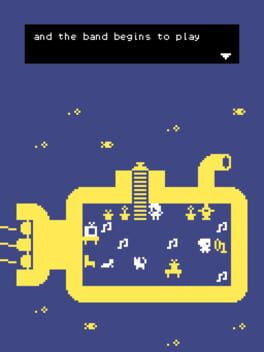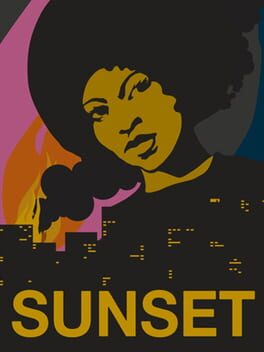fena
6 reviews liked by fena
Probably the only game that has made me simultaneously contemplate the state of prostitution in Japan and its relation to women’s economic condition, evoke within me genuine pathos for an anthropomorphic cat samurai, laugh profusely at one of the dumbest math jokes I’ve ever seen, and soyface at a Hannibal Lector reference.
"B-but it's a b-barebones RPG M-Maker game with almost no g-gameplay or animation!"
To see such pure unadulterated insanity straight from the mind of a person using whatever means they have to express themself is BASED and VALID! Where else am I going to get a story with a married lesbian couple that’s about dismantling the idol industry?? And the great thing about Towelket is it’s like the furthest thing away from an inoffensive piece of media, you just don’t need to feel bad laughing at its stupid perverted jokes because it isn’t braindead like light novel anime.
Compared to past works, Nekoashi Otome just overflows with confidence in its ability to weave together disparate elements into a cohesive whole, helped by Kanao’s massively improved narrative flow and more subdued tones, with the humor being naturally intertwined with the narrative's inherent hilarity and the characters’ weird dynamics, but even more effective here because the plot is better at maneuvering between surrealist comedy and somewhat sensible drama, and the self-aware theatrical style helps to prevent the mixture from being overbearing. I love how the series sticks with its pre-established characters and its vision of them more as actors with evolving "roles" as not only is it nice seeing familiar faces, but this imbues the series with thematic consistency and intriguing metanarratives to follow, Paripariume’s new developments in particular being most thought-provoking. If anything, I wish it spent more time on certain characters, and it feels disappointingly limited by RPG Maker’s visual capabilities, which can undercut how funny the writing is sometimes, but this is still one of the best Towelket games in my opinion - truly a combination of every strange element that made the series work - the funny/bizarro/wholesome/guro/socially aware/whatever happens if you deep dive into the fused brain of Inio Asano and Chizuko Ueno. I love it.
No English translation yet, unfortunately.
EDIT: There is now an English translation, made by MEEEE!!! Download it here: https://patchy-illusion-team.itch.io/wonder-girl-nekoashi-otome
"B-but it's a b-barebones RPG M-Maker game with almost no g-gameplay or animation!"
To see such pure unadulterated insanity straight from the mind of a person using whatever means they have to express themself is BASED and VALID! Where else am I going to get a story with a married lesbian couple that’s about dismantling the idol industry?? And the great thing about Towelket is it’s like the furthest thing away from an inoffensive piece of media, you just don’t need to feel bad laughing at its stupid perverted jokes because it isn’t braindead like light novel anime.
Compared to past works, Nekoashi Otome just overflows with confidence in its ability to weave together disparate elements into a cohesive whole, helped by Kanao’s massively improved narrative flow and more subdued tones, with the humor being naturally intertwined with the narrative's inherent hilarity and the characters’ weird dynamics, but even more effective here because the plot is better at maneuvering between surrealist comedy and somewhat sensible drama, and the self-aware theatrical style helps to prevent the mixture from being overbearing. I love how the series sticks with its pre-established characters and its vision of them more as actors with evolving "roles" as not only is it nice seeing familiar faces, but this imbues the series with thematic consistency and intriguing metanarratives to follow, Paripariume’s new developments in particular being most thought-provoking. If anything, I wish it spent more time on certain characters, and it feels disappointingly limited by RPG Maker’s visual capabilities, which can undercut how funny the writing is sometimes, but this is still one of the best Towelket games in my opinion - truly a combination of every strange element that made the series work - the funny/bizarro/wholesome/guro/socially aware/whatever happens if you deep dive into the fused brain of Inio Asano and Chizuko Ueno. I love it.
No English translation yet, unfortunately.
EDIT: There is now an English translation, made by MEEEE!!! Download it here: https://patchy-illusion-team.itch.io/wonder-girl-nekoashi-otome
Will be posting this on both Kino No Tabi I and II's pages since it will mainly be an analysis of the series' themes and are pretty much interchangeable with each other.
The language barrier impedes most of consuming media that would attract us elsewhere. Most Visual Novels and Japan exclusive titles suffer the fate of being forever stuck in obscurity without the ability to even be translated. While some do manage to escape from Nihon hell thanks to fan translations or even full on localizations, the raw poetry of the words, the dancing of words and playfulness of entendres is lost in many instances either way.
Kino No Tabi is a series of light novels published in sparsity since the 2000s, dealing with the protagonist Kino and her talking motorcycle Hermes as they explore the vast world around them, only staying at countries for 3 days max to assess all there is about the land's culture, their practices and alike before leaving and exploring the next terrain.
I do feel that literature is the best art form to encapsulate the human condition. Due to the way we can explore multiple perspectives, narrate of scenery, topics and imaginary fields for the longest of times along with the powerful image formed into our minds without the need of visuals, a story can tell much without ever explicitly showing the cards at it's hands.
While Visual Novels tend to reach literature and theatrical releases a lot more than they do video games in terms of writing, many visual novels tend to be hit or miss exactly due to that, they either accept their enhancements given by the way of visuals and soundtracks, or fall short on properly utilizing it's own medium. Afterall, if I'm going to be stuck reading for the next few hours, you might as well aid the atmosphere with some tunes or do more than put a doodle with a few different expressions to emote for me.
This is where Kino shines. We've got a fantastic soundtrack to accompany us in our travels, a fully narrated game with different voices for each character, animatics and moving sceneries to illustrate the stories being told, all of that culminate in the most beautiful writing conceived about the mysteries of exploring what is in and outside of the mind.
Here is Kino, always pushing forward in order to know all there is in the world. A reserved young teenager who claims to be fascinated with how the world is not beautiful, therefore making it beautiful because of that instead of in spite of it. A neutral presence who will shake hands with the same arm she uses to shoot the heads of whoever comes between her and her journey. A literal vehicle between us and the end who is nowhere in sight at the same time that is imminent and all encompassing.
Did the segregation of lands derive from a societal collapse? Why is there such an abrupt change in structure and technology between every country? Why can Hermes and other vehicles talk with humans? Will Kino ever find a place to confide and be in peace? Why does the world is so chock full of inequality that so many conflicting messages can be shown to the point of the overall narrative seeming schizophrenic, yet never contradictory?
You might get a glimpse of all these questions and more as it's episodic philosophical themes explore said ventures, however you will be hard pressed to find any answers. Much like the best of literature, it leaves a blank space between author, reader and art for you to fully immerse and live with the thoughts and implications these tales will bring with them.
While there is currently no way to play this in english, all of the tales inside Kino No Tabi I and II are all readable and translated in past and future light novels who were translated by fans, and while some of said genius is lost in translation, I could not encourage you enough to read all of it. It is a shame that we might perhaps never be abtle to support an author as fantastic as Keiichi Sigsawa overseas without him ever knowing of how much his works has changed several of our lives for the best, but if the world is what you make of it, then perhaps some change and hope might be in our way, even if the future or the present show no signs of prosperity, hope does not need a reason to be, much like life, our stories, or the world itself.
The language barrier impedes most of consuming media that would attract us elsewhere. Most Visual Novels and Japan exclusive titles suffer the fate of being forever stuck in obscurity without the ability to even be translated. While some do manage to escape from Nihon hell thanks to fan translations or even full on localizations, the raw poetry of the words, the dancing of words and playfulness of entendres is lost in many instances either way.
Kino No Tabi is a series of light novels published in sparsity since the 2000s, dealing with the protagonist Kino and her talking motorcycle Hermes as they explore the vast world around them, only staying at countries for 3 days max to assess all there is about the land's culture, their practices and alike before leaving and exploring the next terrain.
I do feel that literature is the best art form to encapsulate the human condition. Due to the way we can explore multiple perspectives, narrate of scenery, topics and imaginary fields for the longest of times along with the powerful image formed into our minds without the need of visuals, a story can tell much without ever explicitly showing the cards at it's hands.
While Visual Novels tend to reach literature and theatrical releases a lot more than they do video games in terms of writing, many visual novels tend to be hit or miss exactly due to that, they either accept their enhancements given by the way of visuals and soundtracks, or fall short on properly utilizing it's own medium. Afterall, if I'm going to be stuck reading for the next few hours, you might as well aid the atmosphere with some tunes or do more than put a doodle with a few different expressions to emote for me.
This is where Kino shines. We've got a fantastic soundtrack to accompany us in our travels, a fully narrated game with different voices for each character, animatics and moving sceneries to illustrate the stories being told, all of that culminate in the most beautiful writing conceived about the mysteries of exploring what is in and outside of the mind.
Here is Kino, always pushing forward in order to know all there is in the world. A reserved young teenager who claims to be fascinated with how the world is not beautiful, therefore making it beautiful because of that instead of in spite of it. A neutral presence who will shake hands with the same arm she uses to shoot the heads of whoever comes between her and her journey. A literal vehicle between us and the end who is nowhere in sight at the same time that is imminent and all encompassing.
Did the segregation of lands derive from a societal collapse? Why is there such an abrupt change in structure and technology between every country? Why can Hermes and other vehicles talk with humans? Will Kino ever find a place to confide and be in peace? Why does the world is so chock full of inequality that so many conflicting messages can be shown to the point of the overall narrative seeming schizophrenic, yet never contradictory?
You might get a glimpse of all these questions and more as it's episodic philosophical themes explore said ventures, however you will be hard pressed to find any answers. Much like the best of literature, it leaves a blank space between author, reader and art for you to fully immerse and live with the thoughts and implications these tales will bring with them.
While there is currently no way to play this in english, all of the tales inside Kino No Tabi I and II are all readable and translated in past and future light novels who were translated by fans, and while some of said genius is lost in translation, I could not encourage you enough to read all of it. It is a shame that we might perhaps never be abtle to support an author as fantastic as Keiichi Sigsawa overseas without him ever knowing of how much his works has changed several of our lives for the best, but if the world is what you make of it, then perhaps some change and hope might be in our way, even if the future or the present show no signs of prosperity, hope does not need a reason to be, much like life, our stories, or the world itself.
Type Dreams
2019
in an episode of gamespot’s audio logs, disco elysium’s lead designer and writer robert kurvitz was asked to discuss ZA/UM’s approach to CRPG design, in which he makes clear the title’s great tabletop roleplaying game influence, contrasts disco elysium against modern CRPGS, and elucidates the rationale behind certain UI decisions the game had made. one of the very first things kurvitz highlights, and what was apparently one of the decisions given primacy in pre-production, was the concept of placing the text box in the righthand side of the screen in contrast to the game’s contemporaries, even outside the CRPG genre, which typically slot the text boxes in the lower middle of the screen. the benefits to this alternative organization seem immediately obvious as kurvitz spells them out: increased screen real estate, far more interesting visual composition, and a modality which seemed to emulate the engrained habits of run-of-the-mill technology. peer at disco elysium’s textbox and your mind may not immediately pick up on the contours of its design, but your subconscious will instinctively understand it relates to the modern desktop experience. it innately resembles the windows toolbar, where the clock and calendar is – the screen is visually ‘weighted’ to the right, where the center of gravity is, and it reflects the placement of the players right hand on the keyboard.
the deceptive genius of this UI design is that it wasn’t enough to simply reflect a desktop, which disco elysium’s target demographic was instinctually bound to – ZA/UM wanted to snuff out any and all competitors. that means taking inspiration from unlikely sources, one of which was social media. this helps explain why the prose of disco elysium is so confrontational, sharp, abrasive, sensational; it explains why the text-box was designed to reflect an addictive scrolling experience ala twitter; and it builds upon centuries of entrenched human behaviour in its column design, which may inadvertently reflect a phone but also reflects the structure of a newspaper article. in an era where developers have now fully committed themselves towards eradicating loading screens in a veiled effort to curb the impoverished, stimulation-craving instincts of their player bases (a major hardware decision which is replete with as many pros as cons), ZA/UM subtly adapted the topography of phones that so many players were already used to for their own purposes.
kurvitz’s final salvo is illuminating. every element of this design is an amendment which reflects a critical problem in the games marketability, that disco elysium, judging by its phenomenal success, ameliorated fully: how do you sell a modern CRPG that is simultaneously defined by its lack of combat and by its verbosity? well, it’s simple. everyone says they don’t like reading and claims they don’t want to read – but reading is all we do on social media, in private messages, in news articles. we take it for granted. player retention was a big problem for ZA/UM, so the designers intelligently made what seems like a very easy observation, but then engineered everything about the game’s flow in order to manufacture a state that hopefully will allow players to immerse themselves and to truly salivate over every last written word the game has to offer.
so, reading is something we do every day. no-brainer. but the same exists for writing. both exist in a connected equilibrium. just as we read every day, we write just about every day – whether we realize it or not. some research even suggests that where the mind is allowed to wander while reading, neurons will roar to life and the brain will mimic and simulate the act of pen flowing on paper, gliding betwixt margins with grace and individualized efficacy.
it would be more accurate, however, to make the claim that we’re typing every day.
are typing and writing of the same scholarship? could one make the claim that writing is therefore impoverished by the usurpation of typing – the same way kurvitz attributed to his audience a kind of destitution of readership? reflecting on this opens the floodgates of a perennial chirographic concern. the digital epoch has not responded with kindness to the eloquence of handwriting. surveys often suggest swathes of people go more than half a year without handwriting, and countries that are at the forefront of educational theory like finland suggest that it may no longer bear the same relevance on day-to-day activities as it once used to. the practice is fading, its dominance curtailed by the dissemination of keyboarding. this is in spite of a marked increase in literature suggesting the many benefits of handwriting. among the myriad cognitive benefits there are particularly noteworthy virtues such as attention sustenance, increased capacity for memory, improved self-regulation, and the ability to plan ahead. children who learn to write by hand are known to activate adult-like pathways in their minds which aid in facilitation of improved memory.
and for many, handwriting is an exercise in aesthetic pleasures, a distinct mark of individuality, and a reiteration of a practice undertaken by even their ancestry that innately links mind and soul, body and space, the sensate and the insensate, an unwitting cooperation between all the ontological elements of lived experience that inform existence and being, a unification of self and language. there is the concern that the abstractions of writing, that once in the past were nothing more than pictographs painstakingly carved into slabs and yet was still a decidedly intellectual, tactile, expressive, and intimate practice, are lost in the mechanical era and the complex beauty of it has vanished. many continue to remind and advocate for the pursuance of ‘bilingual writing’ – education that fosters children who can handwrite as well as they type and thus don’t fail to attend to their expanding minds. on a more anecdotal level, all of this rings as true – too often does the pursuit of typing education boil it all down to a callous, impersonal drudgery that serves only to prepare children for the rampant dehumanization inherent to the workforce.
if any of this discourse seems like a relatively modern concern, don’t worry – it isn’t. let me take a quick step back. walter j. ong indicated that our history in knowledge storage can be divided into two phases: the oral-to-literate stage and the chirographic-to-print stage. in the former stage, culture began to transition into a society that relied more and more on the written word and began to leave oral tradition behind – as far back as 3500 BC, sumerians sought to preserve their history by capturing and transcribing oration. in the latter stage, the individual handwritten texts began to be mechanically produced and widely disseminated by means of the printing press. this evolution of writing technology invariably altered the way humanity came to grips with their own awareness and how this changed the epistemology of the time. in ong’s view, it was this shift from the oral tradition to a society of literacy that broke apart the old ways of tribal unity, as fostering literacy operated in tandem with greater levels of individuality. the chirographic-to-print stage of the 1500’s only further reinforced this.
it is here where i must remind that typing is the apotheosis of these differing stages of written tradition, and one that has remained in the public consciousness since the late 1800s – far from a modern invention. the first commercial typewriters were made available in 1874, and the first stenograph was invented in 1879. the history of typing predates the personal computer. but nevertheless it is the fixed rigidity of typing – when taken from its latent form and iterated upon, recontextualized in the digital epoch as an apparatus to be used with the computer – that ong sees as a synthesis of the oral and the literate. it’s a kind of folding together of space and time, one of the arguments of this viewpoint being the idea that the premise of instantaneity central to typing on a computer transforms printed word into something more akin to oration and therefore reunites our own epoch with the era of oral tradition as a result of totally reconfigured relationships between all the constituent elements of the past two stages: the writer, the text, the audience, the interfacing, the medium.
others are not so kind – any technological evolution brings trade-off, and some philosophers note that history is simply an unfolding narrative of intangible gains and omitted losses. of the many philosophers to grapple with the heady question of how the modalities of writing inform existence, heidegger is an authoritative voice and spoke often of the cultural loss typing imprinted on society. it is his view, and that of his supporters, that typing represents something perverse and impersonal, something amputational in logic. the body is diminished and conveyance is thus diminished too; the essential realm of word and hand is shattered, depriving the person of dignity and irreversibly altering our relationship with language and distances ourselves from it, changing something from beautifully abstract transmission to simple transposition. certainly, this view seems almost supported by modern empirical studies that uncannily echo some of these concerns!
and yet, type dreams seems to believe otherwise, and treats all text within as something to be given primacy, something that is profound and bold and transcendent. richard hofmeier’s second developmental outing is an anachronism-laden victorian-set game about typing. so committed to typing it is that everything about interfacing with the game involves the use of keys rather than the mouse, removing yet again any semblance of a bodily gesture that might conflate modern typing with traditional handwriting. you enter a username and password to begin the typist’s journey, and from there depressions of the spacebar cycle through menus, tapping the enter key confirms, hitting the escape key…escapes, and the very act of typing itself provides shortcuts with which to access menus.
as you play type dreams, you get a greater sense of where its priorities lie, and it’s something coincidentally shared with tetris effect, another game i recently played and appreciated: the answer is transcendence. actually, it would be far more accurate to say that what type dreams pursues is something close to ong’s vision of modern typing: complete synchronicity across boundaries of space and time. and it does so by providing an utterly unique audiovisual experience that goes far beyond the simple educational value of a typing game. in type dreams you find a wealth of categories of typing exercises: rote exercises, poetry, classical literature, even smut and songs/lyrics. and in each ‘stage’, reconfigured as a kind of desperate arcade scenario, the player, alongside their chosen imitation avatar, competes with only themselves for faster and faster words-per-minutes, for fewer errors, for unapproachable streaks of correctly placed letters. at the onset of the game you must choose between digital keyboard and typewriter and i must wholly recommend the typewriter – passages are smartly fragmented by the continual rhythm of the player sliding their fingers across function keys f1-f12 to emulate the carriage of a typewriter, a sensory experience unlike anything else that inadvertently calls to mind musicality and instrumentation, suggesting that rather than representing a kind of blasphemous automatism typing may well be a new kind of instrument. a tidbit that is particularly noteworthy and relevant to my argument: typing activates an area in your brain that is equivalent to what drumming activates in your brain.
and it is this kind of ‘music’ and kinaesthetic experience that forms the basis of what type dreams achieves so excellently, as so few games do, interrogating ideas that similarly, so few games do. in type dreams the keyboard is an instrument, a weapon, a guide, an anachronism, a representation of shared consciousness, reflecting an understanding of the infinite forms of text as well. type out these chords of text via an angry letter to a newspaper and listen to the game channeling these frustrations in the forms of aggressive grunts with each letter misspelled or each error in keystroke; explore the textual melodies of some poetry and watch as the visuals accompanying your office change, freeing the mind and allowing poet and player and avatar to be intimately linked like nothing else; type out an account of keyboard rebellion and understand that the drudgery linked between workforce and the word processor can be subverted by the daring, that there is more to text than copying or correspondence; be transported across space and time to verbose scrawlings on prison walls, to the history of stenography, to socrates on trial. it’s a thrillingly evocative experience that lessens the temporal and spatial boundaries of history and literature and that is characterized by efficiency and dexterity in a way that recalls music, so it helps that the music accompanying each stage is really solid – the bimanual and repetitive nature of typing necessitates an audiovisual layer to allow the mind to coalesce with text and wander freely.
all of this serves to strongly re-evaluate typing in the modern era and to rebut most of the concerns of heidegger with new presumptions on what it even means to type, and it allows the self to feel the keyboard as something other than a symbol of workplace productivity. it filters in expression and individuality back into typist methodology, which may explain why there is no mechanical difference between the two typewriters on offer – only an aesthetic one. you begin to pick up on the subtleties of typing’s topography, on how hands moving across keys can influence emotion and thought, on how it serves as an appropriate contrast to the unimanual nature of handwriting. handwriting allows for reflection, for contemplation, but what type dreams suggests is that typing can become a tool for embodiment. this makes sense given the increased tempo that contrasts the two modes of writing, but it’s yet another point in the game’s favour- can you still feel the significance of the game’s text in spite of that breakneck pace, or has it slipped through the permeating fog of synchronicity? type dreams works its ass off to have your answer be a resounding yes. yes, in spite of the kaleidoscopic nature of digital text, in spite of its immaterial and infinite nature, in spite of the concern for the lessened significance of text and how it may erode at our senses and reduce our attention into fragments, transcendence can still occur. meaning can still be felt. text hasn’t necessarily been impoverished – not when it’s so lived-in.
that isn’t to say the game is perfect. in fact, the game is laughably imperfect, probably the most laughably imperfect game i've given such a high rating. it’s buggy, there are some UI issues and several technical dilemmas, and the greatest kicker of all: it’s unfinished. as i tried to unlock more of the game’s levels in proto-drakengardian fashion i came to realize there was only so much available, that the game was in an adolescent state and might never see completion. yet so much of the game contains the seeds of what is such an unexpectedly ideal game for me that i cannot help but give it such high accolades – the immensity of the experience is deserving of far more attention and far more interrogation from far smarter figures than i.
richard hofmeier is a complex figure for the games media to reckon with. after the smash hit success of cart life in indie games circles, he vanished from the public eye and released cart life in open source format, citing its imperfection as a barrier to its permissibility as a for-profit release. type dreams was his second major outing, released on itch.io in an incomplete state, originally at a price so that hofmeier could make ends meet. by his own admission, he disliked the fact that he had to do so, but he had been working away at this and several other projects over the course of several years, so he had to release at least something to get past his perfectionist tendency. since then the game has received several inconsistent updates before the pipeline of developer communication shut off entirely without warning in november of last year. currently, the game is listed as cancelled on itch.io. the version of the game you can download, uploaded 81 days ago, is listed as td_final.zip. when you try to click on the game’s “story” mode (one might assume the game’s main campaign would have been papers, please-esque; reliance on electricity was a drawback for the digital keyboard made apparent to the player when they are prompted to choose their instrument of choice), you are greeted with the following message:
“These stories were boring. Consider making up new ones; new stories about [PLAYER NAME] might be worth writing.”
as it stands, i have no way of knowing if the sentiment of this message and the title’s abrupt and unquestioned ‘cancellation’ are related. but in my heart of hearts, i hope hofmeier returns to this project. there’s nothing else like it.
https://hofmeier.itch.io/type-dreams
ALRIGHT, blanket announcement: on top of the game being available on the internet archive, as was wisely pointed out by DJSCheddar, MrPixelton was kind enough to get a mega link up and running for type dreams using their copy of the game since my laptop was indisposed. so shouts out to you guys, you both rock, and all of it helps to keep this game preserved and alive. i think the internet archive solution will be the public one and ill keep the mega link open for private channels/as a backup. thanks everyone for your efforts! whenever hofmeier returns to the public eye please try to financially support him, we need this kind of creativity in the medium
be sure to reach out if you'd like the mega link!
the deceptive genius of this UI design is that it wasn’t enough to simply reflect a desktop, which disco elysium’s target demographic was instinctually bound to – ZA/UM wanted to snuff out any and all competitors. that means taking inspiration from unlikely sources, one of which was social media. this helps explain why the prose of disco elysium is so confrontational, sharp, abrasive, sensational; it explains why the text-box was designed to reflect an addictive scrolling experience ala twitter; and it builds upon centuries of entrenched human behaviour in its column design, which may inadvertently reflect a phone but also reflects the structure of a newspaper article. in an era where developers have now fully committed themselves towards eradicating loading screens in a veiled effort to curb the impoverished, stimulation-craving instincts of their player bases (a major hardware decision which is replete with as many pros as cons), ZA/UM subtly adapted the topography of phones that so many players were already used to for their own purposes.
kurvitz’s final salvo is illuminating. every element of this design is an amendment which reflects a critical problem in the games marketability, that disco elysium, judging by its phenomenal success, ameliorated fully: how do you sell a modern CRPG that is simultaneously defined by its lack of combat and by its verbosity? well, it’s simple. everyone says they don’t like reading and claims they don’t want to read – but reading is all we do on social media, in private messages, in news articles. we take it for granted. player retention was a big problem for ZA/UM, so the designers intelligently made what seems like a very easy observation, but then engineered everything about the game’s flow in order to manufacture a state that hopefully will allow players to immerse themselves and to truly salivate over every last written word the game has to offer.
so, reading is something we do every day. no-brainer. but the same exists for writing. both exist in a connected equilibrium. just as we read every day, we write just about every day – whether we realize it or not. some research even suggests that where the mind is allowed to wander while reading, neurons will roar to life and the brain will mimic and simulate the act of pen flowing on paper, gliding betwixt margins with grace and individualized efficacy.
it would be more accurate, however, to make the claim that we’re typing every day.
are typing and writing of the same scholarship? could one make the claim that writing is therefore impoverished by the usurpation of typing – the same way kurvitz attributed to his audience a kind of destitution of readership? reflecting on this opens the floodgates of a perennial chirographic concern. the digital epoch has not responded with kindness to the eloquence of handwriting. surveys often suggest swathes of people go more than half a year without handwriting, and countries that are at the forefront of educational theory like finland suggest that it may no longer bear the same relevance on day-to-day activities as it once used to. the practice is fading, its dominance curtailed by the dissemination of keyboarding. this is in spite of a marked increase in literature suggesting the many benefits of handwriting. among the myriad cognitive benefits there are particularly noteworthy virtues such as attention sustenance, increased capacity for memory, improved self-regulation, and the ability to plan ahead. children who learn to write by hand are known to activate adult-like pathways in their minds which aid in facilitation of improved memory.
and for many, handwriting is an exercise in aesthetic pleasures, a distinct mark of individuality, and a reiteration of a practice undertaken by even their ancestry that innately links mind and soul, body and space, the sensate and the insensate, an unwitting cooperation between all the ontological elements of lived experience that inform existence and being, a unification of self and language. there is the concern that the abstractions of writing, that once in the past were nothing more than pictographs painstakingly carved into slabs and yet was still a decidedly intellectual, tactile, expressive, and intimate practice, are lost in the mechanical era and the complex beauty of it has vanished. many continue to remind and advocate for the pursuance of ‘bilingual writing’ – education that fosters children who can handwrite as well as they type and thus don’t fail to attend to their expanding minds. on a more anecdotal level, all of this rings as true – too often does the pursuit of typing education boil it all down to a callous, impersonal drudgery that serves only to prepare children for the rampant dehumanization inherent to the workforce.
if any of this discourse seems like a relatively modern concern, don’t worry – it isn’t. let me take a quick step back. walter j. ong indicated that our history in knowledge storage can be divided into two phases: the oral-to-literate stage and the chirographic-to-print stage. in the former stage, culture began to transition into a society that relied more and more on the written word and began to leave oral tradition behind – as far back as 3500 BC, sumerians sought to preserve their history by capturing and transcribing oration. in the latter stage, the individual handwritten texts began to be mechanically produced and widely disseminated by means of the printing press. this evolution of writing technology invariably altered the way humanity came to grips with their own awareness and how this changed the epistemology of the time. in ong’s view, it was this shift from the oral tradition to a society of literacy that broke apart the old ways of tribal unity, as fostering literacy operated in tandem with greater levels of individuality. the chirographic-to-print stage of the 1500’s only further reinforced this.
it is here where i must remind that typing is the apotheosis of these differing stages of written tradition, and one that has remained in the public consciousness since the late 1800s – far from a modern invention. the first commercial typewriters were made available in 1874, and the first stenograph was invented in 1879. the history of typing predates the personal computer. but nevertheless it is the fixed rigidity of typing – when taken from its latent form and iterated upon, recontextualized in the digital epoch as an apparatus to be used with the computer – that ong sees as a synthesis of the oral and the literate. it’s a kind of folding together of space and time, one of the arguments of this viewpoint being the idea that the premise of instantaneity central to typing on a computer transforms printed word into something more akin to oration and therefore reunites our own epoch with the era of oral tradition as a result of totally reconfigured relationships between all the constituent elements of the past two stages: the writer, the text, the audience, the interfacing, the medium.
others are not so kind – any technological evolution brings trade-off, and some philosophers note that history is simply an unfolding narrative of intangible gains and omitted losses. of the many philosophers to grapple with the heady question of how the modalities of writing inform existence, heidegger is an authoritative voice and spoke often of the cultural loss typing imprinted on society. it is his view, and that of his supporters, that typing represents something perverse and impersonal, something amputational in logic. the body is diminished and conveyance is thus diminished too; the essential realm of word and hand is shattered, depriving the person of dignity and irreversibly altering our relationship with language and distances ourselves from it, changing something from beautifully abstract transmission to simple transposition. certainly, this view seems almost supported by modern empirical studies that uncannily echo some of these concerns!
and yet, type dreams seems to believe otherwise, and treats all text within as something to be given primacy, something that is profound and bold and transcendent. richard hofmeier’s second developmental outing is an anachronism-laden victorian-set game about typing. so committed to typing it is that everything about interfacing with the game involves the use of keys rather than the mouse, removing yet again any semblance of a bodily gesture that might conflate modern typing with traditional handwriting. you enter a username and password to begin the typist’s journey, and from there depressions of the spacebar cycle through menus, tapping the enter key confirms, hitting the escape key…escapes, and the very act of typing itself provides shortcuts with which to access menus.
as you play type dreams, you get a greater sense of where its priorities lie, and it’s something coincidentally shared with tetris effect, another game i recently played and appreciated: the answer is transcendence. actually, it would be far more accurate to say that what type dreams pursues is something close to ong’s vision of modern typing: complete synchronicity across boundaries of space and time. and it does so by providing an utterly unique audiovisual experience that goes far beyond the simple educational value of a typing game. in type dreams you find a wealth of categories of typing exercises: rote exercises, poetry, classical literature, even smut and songs/lyrics. and in each ‘stage’, reconfigured as a kind of desperate arcade scenario, the player, alongside their chosen imitation avatar, competes with only themselves for faster and faster words-per-minutes, for fewer errors, for unapproachable streaks of correctly placed letters. at the onset of the game you must choose between digital keyboard and typewriter and i must wholly recommend the typewriter – passages are smartly fragmented by the continual rhythm of the player sliding their fingers across function keys f1-f12 to emulate the carriage of a typewriter, a sensory experience unlike anything else that inadvertently calls to mind musicality and instrumentation, suggesting that rather than representing a kind of blasphemous automatism typing may well be a new kind of instrument. a tidbit that is particularly noteworthy and relevant to my argument: typing activates an area in your brain that is equivalent to what drumming activates in your brain.
and it is this kind of ‘music’ and kinaesthetic experience that forms the basis of what type dreams achieves so excellently, as so few games do, interrogating ideas that similarly, so few games do. in type dreams the keyboard is an instrument, a weapon, a guide, an anachronism, a representation of shared consciousness, reflecting an understanding of the infinite forms of text as well. type out these chords of text via an angry letter to a newspaper and listen to the game channeling these frustrations in the forms of aggressive grunts with each letter misspelled or each error in keystroke; explore the textual melodies of some poetry and watch as the visuals accompanying your office change, freeing the mind and allowing poet and player and avatar to be intimately linked like nothing else; type out an account of keyboard rebellion and understand that the drudgery linked between workforce and the word processor can be subverted by the daring, that there is more to text than copying or correspondence; be transported across space and time to verbose scrawlings on prison walls, to the history of stenography, to socrates on trial. it’s a thrillingly evocative experience that lessens the temporal and spatial boundaries of history and literature and that is characterized by efficiency and dexterity in a way that recalls music, so it helps that the music accompanying each stage is really solid – the bimanual and repetitive nature of typing necessitates an audiovisual layer to allow the mind to coalesce with text and wander freely.
all of this serves to strongly re-evaluate typing in the modern era and to rebut most of the concerns of heidegger with new presumptions on what it even means to type, and it allows the self to feel the keyboard as something other than a symbol of workplace productivity. it filters in expression and individuality back into typist methodology, which may explain why there is no mechanical difference between the two typewriters on offer – only an aesthetic one. you begin to pick up on the subtleties of typing’s topography, on how hands moving across keys can influence emotion and thought, on how it serves as an appropriate contrast to the unimanual nature of handwriting. handwriting allows for reflection, for contemplation, but what type dreams suggests is that typing can become a tool for embodiment. this makes sense given the increased tempo that contrasts the two modes of writing, but it’s yet another point in the game’s favour- can you still feel the significance of the game’s text in spite of that breakneck pace, or has it slipped through the permeating fog of synchronicity? type dreams works its ass off to have your answer be a resounding yes. yes, in spite of the kaleidoscopic nature of digital text, in spite of its immaterial and infinite nature, in spite of the concern for the lessened significance of text and how it may erode at our senses and reduce our attention into fragments, transcendence can still occur. meaning can still be felt. text hasn’t necessarily been impoverished – not when it’s so lived-in.
that isn’t to say the game is perfect. in fact, the game is laughably imperfect, probably the most laughably imperfect game i've given such a high rating. it’s buggy, there are some UI issues and several technical dilemmas, and the greatest kicker of all: it’s unfinished. as i tried to unlock more of the game’s levels in proto-drakengardian fashion i came to realize there was only so much available, that the game was in an adolescent state and might never see completion. yet so much of the game contains the seeds of what is such an unexpectedly ideal game for me that i cannot help but give it such high accolades – the immensity of the experience is deserving of far more attention and far more interrogation from far smarter figures than i.
richard hofmeier is a complex figure for the games media to reckon with. after the smash hit success of cart life in indie games circles, he vanished from the public eye and released cart life in open source format, citing its imperfection as a barrier to its permissibility as a for-profit release. type dreams was his second major outing, released on itch.io in an incomplete state, originally at a price so that hofmeier could make ends meet. by his own admission, he disliked the fact that he had to do so, but he had been working away at this and several other projects over the course of several years, so he had to release at least something to get past his perfectionist tendency. since then the game has received several inconsistent updates before the pipeline of developer communication shut off entirely without warning in november of last year. currently, the game is listed as cancelled on itch.io. the version of the game you can download, uploaded 81 days ago, is listed as td_final.zip. when you try to click on the game’s “story” mode (one might assume the game’s main campaign would have been papers, please-esque; reliance on electricity was a drawback for the digital keyboard made apparent to the player when they are prompted to choose their instrument of choice), you are greeted with the following message:
“These stories were boring. Consider making up new ones; new stories about [PLAYER NAME] might be worth writing.”
as it stands, i have no way of knowing if the sentiment of this message and the title’s abrupt and unquestioned ‘cancellation’ are related. but in my heart of hearts, i hope hofmeier returns to this project. there’s nothing else like it.
https://hofmeier.itch.io/type-dreams
ALRIGHT, blanket announcement: on top of the game being available on the internet archive, as was wisely pointed out by DJSCheddar, MrPixelton was kind enough to get a mega link up and running for type dreams using their copy of the game since my laptop was indisposed. so shouts out to you guys, you both rock, and all of it helps to keep this game preserved and alive. i think the internet archive solution will be the public one and ill keep the mega link open for private channels/as a backup. thanks everyone for your efforts! whenever hofmeier returns to the public eye please try to financially support him, we need this kind of creativity in the medium
be sure to reach out if you'd like the mega link!
Hey I also published a version of this with some pretty pictures on medium
At first blush Germs: Nerawareta Machi is another entry in that class of oddball PSX Japan-only curios, a game good for glancing at and then digesting into a piece of trivia or a short youtube video. "Do you know about this weird game Germs?? Check out the cover art."
When you dig deeper into it though, Germs reveals itself to be a genuinely fascinating and worthwhile work of art about the terror of change, full of ideas and ambition so great the game itself can struggle to contain it all. A team of just six developers crafted a 3D open-world narrative action-adventure game set in a single explorable city, on console, in 1999. Germs's use of space anticipates the contemplative, barren landscape of Shadow of the Colossus. It had a fully 3D drivable open world two years before Grand Theft Auto did. It features survival elements that would become ubiquitous in popular games in the 2010s. It predates Deadly Premonition by over a decade. There's still nothing quite like it.
Germs sees its protagonist coming back home after many years away. They left to work as a journalist at a respected newspaper, but all these years later a series of strange occurrences in their hometown have inspired them to return and investigate the mystery while working for the local paper. Germs opens on a foreboding note, the brooding soundscape suggesting that perhaps this old city was better left alone.
But the temptation is too great, something remarkable is definitely happening in the town. Reports have come in of a shining ball of light flying over the mountains. A strange office has appeared in town that sends emails to residents about viruses, change, evolution, and ascension. Dozens of citizens are found wandering out of the abandoned coal mine in a state of fear and confusion; nobody ever goes in but people keep coming out. A tale of invading aliens using a virus to mutate humans gets underway, and it's up to the player to get to the bottom of it all.
The player is lowered into this mystery with minimal guidance. The computer terminal at their office has a few unread emails that point in the right direction, and their assistant suggests they ask around the information center nearby, and that's it. Germs offers an open-ended adventure where the player can poke around the town at their leisure, and investigate the leads in their emails in a non-linear order.
The world outside the office is rendered in stark black and white. Recalling the paranoia of films like Invasion of the Body Snatchers and Them!, the grayscale visuals present the town as full of latent danger yet drained of energy, a place no one should inhabit. The coal mine the town was built around has long since closed down, and the rows of blocky buildings form a giant skeleton that houses only a few sources of life. The game's interior spaces are in color, as if the survivors in the town are the only remaining sparks of life hiding from the oppressive atmosphere outside. This eerie environment is one of the most striking I've ever inhabited in a videogame. It feels like a surreal nightmare bottled and preserved. The world is inert. For the protagonist, being back home is like being trapped in a faded photograph.
At the start of the game, upon receiving an email from an old friend asking the protagonist to meet them at their house, the player is faced with Germs's first and most definitive challenge: to figure out how public transportation works in the city. There are multiple bus routes, an underground metro, and a train in Germs's city, all on top of the car the player is given from the start. This series of transportation systems is realized with beautiful detail. The large scale of the city makes learning their operation essential for getting around, and their interconnections make the overall world design the greatest single aspect of Germs as a work of interactivity. This is a game that turns remembering directions for taking the subway and walking a few blocks into a thrilling experience.
Nearly as impressive is the game's approach to narrative design. Germs's narrative plays out in a modular series of events, which the player can tackle non-linearly. Each key building in the game goes through several major story states, from pre-invasion, to invasion, to liberation. Locations in Germs get recontextualized from mundane spaces to dungeons full of combat encounters, then back again, which makes the sense of invasion feel all the more real. Tied into these main beats are the stories of several characters, from some old friends of the protagonist, to a mad scientist, to a secret agent tasked with investigating the town. Their narratives progress as the player liberates buildings and visits them in optional sequences, which makes the overall narrative design lightweight and fluid, especially for a game of this era. Empowering the player to talk to people and clear out locations in the order they choose helps to ground them in the city, and allowing them to help dictate the narrative's progression makes the town feel like a real place in real danger. Finally of note is Germs's unique fail state. If the player is defeated in combat they do not get a Game Over, instead they're reborn in the coal mine as the sort of mutant they've been killing. In this state they can talk to the other mutants peacefully and carry on with their life, though they won't be able to progress further in the game until they get cured at the hospital. On top of all the other interesting things Germs was doing in 1999, it also turns a player's failure into a narratively and mechanically intriguing, thematically resonant feature, something most games two decades later are struggling to do.
Despite its achievements in narrative and world design, the game is not without its share of rough edges. The combat is clunky at best, though it doesn't commit the sin of also being challenging. Circle strafing or ducking behind corners with a decent weapon is all it takes to defeat any mutant, and frankly this is a positive. In an experience full of friction the combat itself proves mercifully straightforward.
Likewise, Germs's integration of role-playing and survival simulation mechanics is forward thinking but embryonic in execution. The player has to manage hunger that doubles for health, damage to their individual limbs, and the need for sleep. The game also features an experience point system that lets the player level up their competency with individual weapon types as they use them, increasing accuracy. The kitchen sink-ish inclusion of these elements adds to Germs's overall ambitiousness in design, but in the course of play they end up feeling a bit perfunctory. Keep your health up at restaurants, see a doctor and sleep at the end of the day, and stick to one good weapon to make it accurate, that's the extent of the decision making.
The area where Germs's various design elements do cohere into brilliance is in the interplay between the health system and the aforementioned world design. To get through a building full of mutants, the player will want as much health as possible going in, and since their health depletes slowly over time, they're incentivized to get from place to place as efficiently as possible. This means skillful play in Germs is not in the shooting, it's in the navigation. The game trains you to plan a day trip to the coal mine by learning the fastest route to a delicatessen to get food to go, then knowing which bus will get you to the closest station for the special train that heads north to the mine, and then knowing the quickest way to get back to the hotel via the subway so you can squeeze in a visit to the strange old man living near the mountains before bed.
Germs's somewhat sparse story speaks to the pain and fear that comes with change, and the fear that stasis might be even worse. Two of the major characters are old friends of the protagonist. One of them is coming back to town for a job, what else, and by the end she feels the virus welling up within her, stuck between the human she was and the deformed thing she might soon become. The other friend never left, he stayed and dried up along with his hometown, and all he has now is his endless study of the virus. Even when the invasion has been stopped and the mutants killed, he just thanks you politely before stating that he really ought to get back to his research. The alien virus engulfing the town changes the host into some other type of being, and the transformation is described by turns as either horrific or sublime, and often both. The long abandoned town is now the site of cataclysmic change, and interestingly, the protagonist has come back to their lifeless home in order to stop that change.
I come from something of a ghost town myself. It's a small place with lots of dead ends that seemed to me growing up like it was specially built to be moved away from. The idea that I could one day go back there, take up a job, and pick up my old life, gives me a sort of creeping sensation like I can feel my body decaying around me. But on the other hand as I move forward in life and set big goals that I inevitably fail to reach, I feel the fear of the unknown future, wondering if I'm up for whatever strange and difficult form it's sure to take. Germs speaks to me as an examination of that tension, staying still is unthinkable but moving forward is terrifying. The understated tragedy at the heart of Germs's slim narrative lies in how, after defeating in the final boss the part of themself that wishes to embrace the grotesque future of mutation, the protagonist dismantles the source of the change in the name of safety. The choice makes sense, it's an alien invasion after all, but what is left in the end? The game has no distinct ending, no fade to black with credits rolling. The player is just sent right back to their office at the newspaper, the only change being that the citizens are more grateful and fewer in number now. Color does not find its way back to the targeted city, it's just the same old town. No alien invasion killed this place, it was already dead. The ending of Germs: Nerawareta Machi is just that faded photograph, an endless, quiet purgatory. The future the aliens promised may have been horrific, but without it what the hell is the present? It's a brilliant, haunting non-ending that follows the player even after the game is shut off for the last time.
Germs deserves to be more than trivia. It's shockingly prescient, systems-rich, full of harmony between narrative and mechanics, and the only game from a small team of artists biting off the biggest goddamn gulp they could imagine with zero thought as to how they might chew it. I love it, it's one of the finest pieces of foreboding and alienation I've ever played.
At first blush Germs: Nerawareta Machi is another entry in that class of oddball PSX Japan-only curios, a game good for glancing at and then digesting into a piece of trivia or a short youtube video. "Do you know about this weird game Germs?? Check out the cover art."
When you dig deeper into it though, Germs reveals itself to be a genuinely fascinating and worthwhile work of art about the terror of change, full of ideas and ambition so great the game itself can struggle to contain it all. A team of just six developers crafted a 3D open-world narrative action-adventure game set in a single explorable city, on console, in 1999. Germs's use of space anticipates the contemplative, barren landscape of Shadow of the Colossus. It had a fully 3D drivable open world two years before Grand Theft Auto did. It features survival elements that would become ubiquitous in popular games in the 2010s. It predates Deadly Premonition by over a decade. There's still nothing quite like it.
Germs sees its protagonist coming back home after many years away. They left to work as a journalist at a respected newspaper, but all these years later a series of strange occurrences in their hometown have inspired them to return and investigate the mystery while working for the local paper. Germs opens on a foreboding note, the brooding soundscape suggesting that perhaps this old city was better left alone.
But the temptation is too great, something remarkable is definitely happening in the town. Reports have come in of a shining ball of light flying over the mountains. A strange office has appeared in town that sends emails to residents about viruses, change, evolution, and ascension. Dozens of citizens are found wandering out of the abandoned coal mine in a state of fear and confusion; nobody ever goes in but people keep coming out. A tale of invading aliens using a virus to mutate humans gets underway, and it's up to the player to get to the bottom of it all.
The player is lowered into this mystery with minimal guidance. The computer terminal at their office has a few unread emails that point in the right direction, and their assistant suggests they ask around the information center nearby, and that's it. Germs offers an open-ended adventure where the player can poke around the town at their leisure, and investigate the leads in their emails in a non-linear order.
The world outside the office is rendered in stark black and white. Recalling the paranoia of films like Invasion of the Body Snatchers and Them!, the grayscale visuals present the town as full of latent danger yet drained of energy, a place no one should inhabit. The coal mine the town was built around has long since closed down, and the rows of blocky buildings form a giant skeleton that houses only a few sources of life. The game's interior spaces are in color, as if the survivors in the town are the only remaining sparks of life hiding from the oppressive atmosphere outside. This eerie environment is one of the most striking I've ever inhabited in a videogame. It feels like a surreal nightmare bottled and preserved. The world is inert. For the protagonist, being back home is like being trapped in a faded photograph.
At the start of the game, upon receiving an email from an old friend asking the protagonist to meet them at their house, the player is faced with Germs's first and most definitive challenge: to figure out how public transportation works in the city. There are multiple bus routes, an underground metro, and a train in Germs's city, all on top of the car the player is given from the start. This series of transportation systems is realized with beautiful detail. The large scale of the city makes learning their operation essential for getting around, and their interconnections make the overall world design the greatest single aspect of Germs as a work of interactivity. This is a game that turns remembering directions for taking the subway and walking a few blocks into a thrilling experience.
Nearly as impressive is the game's approach to narrative design. Germs's narrative plays out in a modular series of events, which the player can tackle non-linearly. Each key building in the game goes through several major story states, from pre-invasion, to invasion, to liberation. Locations in Germs get recontextualized from mundane spaces to dungeons full of combat encounters, then back again, which makes the sense of invasion feel all the more real. Tied into these main beats are the stories of several characters, from some old friends of the protagonist, to a mad scientist, to a secret agent tasked with investigating the town. Their narratives progress as the player liberates buildings and visits them in optional sequences, which makes the overall narrative design lightweight and fluid, especially for a game of this era. Empowering the player to talk to people and clear out locations in the order they choose helps to ground them in the city, and allowing them to help dictate the narrative's progression makes the town feel like a real place in real danger. Finally of note is Germs's unique fail state. If the player is defeated in combat they do not get a Game Over, instead they're reborn in the coal mine as the sort of mutant they've been killing. In this state they can talk to the other mutants peacefully and carry on with their life, though they won't be able to progress further in the game until they get cured at the hospital. On top of all the other interesting things Germs was doing in 1999, it also turns a player's failure into a narratively and mechanically intriguing, thematically resonant feature, something most games two decades later are struggling to do.
Despite its achievements in narrative and world design, the game is not without its share of rough edges. The combat is clunky at best, though it doesn't commit the sin of also being challenging. Circle strafing or ducking behind corners with a decent weapon is all it takes to defeat any mutant, and frankly this is a positive. In an experience full of friction the combat itself proves mercifully straightforward.
Likewise, Germs's integration of role-playing and survival simulation mechanics is forward thinking but embryonic in execution. The player has to manage hunger that doubles for health, damage to their individual limbs, and the need for sleep. The game also features an experience point system that lets the player level up their competency with individual weapon types as they use them, increasing accuracy. The kitchen sink-ish inclusion of these elements adds to Germs's overall ambitiousness in design, but in the course of play they end up feeling a bit perfunctory. Keep your health up at restaurants, see a doctor and sleep at the end of the day, and stick to one good weapon to make it accurate, that's the extent of the decision making.
The area where Germs's various design elements do cohere into brilliance is in the interplay between the health system and the aforementioned world design. To get through a building full of mutants, the player will want as much health as possible going in, and since their health depletes slowly over time, they're incentivized to get from place to place as efficiently as possible. This means skillful play in Germs is not in the shooting, it's in the navigation. The game trains you to plan a day trip to the coal mine by learning the fastest route to a delicatessen to get food to go, then knowing which bus will get you to the closest station for the special train that heads north to the mine, and then knowing the quickest way to get back to the hotel via the subway so you can squeeze in a visit to the strange old man living near the mountains before bed.
Germs's somewhat sparse story speaks to the pain and fear that comes with change, and the fear that stasis might be even worse. Two of the major characters are old friends of the protagonist. One of them is coming back to town for a job, what else, and by the end she feels the virus welling up within her, stuck between the human she was and the deformed thing she might soon become. The other friend never left, he stayed and dried up along with his hometown, and all he has now is his endless study of the virus. Even when the invasion has been stopped and the mutants killed, he just thanks you politely before stating that he really ought to get back to his research. The alien virus engulfing the town changes the host into some other type of being, and the transformation is described by turns as either horrific or sublime, and often both. The long abandoned town is now the site of cataclysmic change, and interestingly, the protagonist has come back to their lifeless home in order to stop that change.
I come from something of a ghost town myself. It's a small place with lots of dead ends that seemed to me growing up like it was specially built to be moved away from. The idea that I could one day go back there, take up a job, and pick up my old life, gives me a sort of creeping sensation like I can feel my body decaying around me. But on the other hand as I move forward in life and set big goals that I inevitably fail to reach, I feel the fear of the unknown future, wondering if I'm up for whatever strange and difficult form it's sure to take. Germs speaks to me as an examination of that tension, staying still is unthinkable but moving forward is terrifying. The understated tragedy at the heart of Germs's slim narrative lies in how, after defeating in the final boss the part of themself that wishes to embrace the grotesque future of mutation, the protagonist dismantles the source of the change in the name of safety. The choice makes sense, it's an alien invasion after all, but what is left in the end? The game has no distinct ending, no fade to black with credits rolling. The player is just sent right back to their office at the newspaper, the only change being that the citizens are more grateful and fewer in number now. Color does not find its way back to the targeted city, it's just the same old town. No alien invasion killed this place, it was already dead. The ending of Germs: Nerawareta Machi is just that faded photograph, an endless, quiet purgatory. The future the aliens promised may have been horrific, but without it what the hell is the present? It's a brilliant, haunting non-ending that follows the player even after the game is shut off for the last time.
Germs deserves to be more than trivia. It's shockingly prescient, systems-rich, full of harmony between narrative and mechanics, and the only game from a small team of artists biting off the biggest goddamn gulp they could imagine with zero thought as to how they might chew it. I love it, it's one of the finest pieces of foreboding and alienation I've ever played.
Quest for Moomoo
2023
CN: Anti-gamer sentiments, intellectual discussions of 'games', lots of reference quotations, Feminist sentiment
Stated Potential Conflicts of Interest: Kye is one of my closest friends at the moment, however, it's a non-monetary relationship. However, I do post all of my write up on games in her invitation only discord server as its one of only 3 places I have to share my write ups off site with people who might be users here (the other 2 being another invitation only discord, and twitter).
Policy
--------------------------------------------------------------------------------------------
Reflects my favourite type of videoplay jank, you have a PNG image for a title screen with the minimum number of options to choose, and then you're dropped into a floating environment box in the middle of the sky unable to know how to interact with things, no exposition either. If you move the camera the trees will switch position and hang off the side. It takes a second to figure out what the controls are here for interacting bizarre objects. None of these are complaints against the experience though, it enhances the strangeness of the environment that much more. The Catamites' writes on the "computer memories" in play environments stating
"playing a computer game can be a strangely unmemorable activity - move here, move there, eat the cherries, etc. we keep track of a kind of vague gestalt impression of what's going on but it's hard to remember exactly what we've just been doing or why, in part because the game keeps track of that for us. in many of lilith's games this perpetual present is placed against a frozen and inscrutable memory world, and part of their power comes from playing with the back and forth between the two forces."
I think this videoplay intervenes on that usual fetchquest style of play by dropping you into a world without the grace of some expository explanation, and by the fetch quest itself being truncated. Most of play is in figuring out the nuance of controls, how to 'express' Kye.
After you get a hang of the controls, the endearing quality of this usually generic 3D RPGMaker asset type visual style sinks. Everything about these assets is bright, soothing, and melancholy. The camera panning to a fixed position on the other end of the environment box amuses you when you realize that 2/4 of them are obscured by trees.
princess/GirlSoftware argues in terms of channeling girliness that:
"if u can reimagine a game but make it girlier ur already contributing more to the medium than any guy as far as im concerned."
In this case, Kye has reimagined a feminine melancholy in what is often referred to as the 'joke game' or 'gag game'. Videoplay like You Have To Burn The Rope and Space Funeral are both games that amuse me, but quantify a more belligerent aura around their appeals of videoplay winstate hollowness.
I think this piece is snubbing false binaries of choice in games and leads to its punchline in a mellow enough way that its stings when it happens. It's a joke, but one that sees an anxious cruelty in losing a loved one and trying to find them again.
I recognize the perception as just paying lip service here, but I don't think that's the case. I think instead it's because I enjoy systems that enhance 'aliveness' and quell 'deadness'. This is a concept I've picked up from Alt Designer and professor Melos who defines these aspects as follows "An Alivegame is a game whose purpose is something to enrich the lives and humanity of those who play it. It can be as simple as a 1-hour game made for a friend's birthday." in contrast to a deadgame which is "On the other path of history, we have the endless, dead, self-consuming Deadgame Industry, exhausting the creative lives of millions on producing these empty games that might be ‘fun’ but are, mostly, just there for us to whittle away the time and leave ourselves unchanged." While I've abandoned all use of the term 'game' for the moment, as I believe its very usage advocates deadness¹ , advocating instead for something like 'play environment', 'piece', 'videoplay', etc. I believe the general idea of aliveness being found in experiences small in scale is spot on, though I disagree slightly with his humanitarian agenda. While the aspect of 'deadness' in a play experience can speak to aspects of monetization, crunch, minority hatred, etc. which are all hideous. The appreciation for aliveness has nothing for me to do with a 'human' connection. Instead, its a connection to a 'thrust' in the articulation of a play experience as doing something distinct and beautiful is usually felt here in the same way that it is for poetry in the written word. Regardless of if experience is ambiguous in function, or clear, the compactness of the form allows for all of the dangly bits to read out much more clearly. Simply put, I just think their formal quality of engagement is superior in every way, and the only reason people play 'dead' games is because of pleasure trickery and to be a 'part of the discussion'.
The play environments I engage with at this point are mainly from a site brimming of aliveness, Itchio. The aura in general there is in a more open trading of communal resources and function, with few if any of the financialized aspects that can create hierarchies that build towards deadness and gamification². I believe deadness in games can be valuable, but mainly as a reflection of current capitalist conditions in the arts rather than any innate appreciation in the 'hollowness' of the corpse. Functionally deadness can also depict to me a specific kind of lost melancholy but it has to be done very particularly. Regardless deadness is not a significant value in what I tend to pursue.
That said, aliveness doesn't completely explain my preferences either. People may wonder why I tend to like stuff like this, supposed bottom of the barrel videoplay jank because its 'obviously rushed'. Well, it's ultimately because these small PC throwaway experiences are consistently transformative and new, and allow for a large amount of comparative data to draw on in relation. I truly am getting something out of experiences like this, it's not just for show.
The only main issue I ever tend to take with small scale alive play experiences is aspects of writing, stuff like typos or weak word choice, excessive alliteration, etc. Those have been avoided here and that's good enough for me. I think its better to not see yourself as being 'tricked' or 'disappointed' by such small experiences. Nor should be any shame in conveying a world in 30 minutes or less. On the contrary, the thrust of that shame should go to audience mob vindictiveness over the grievance of 'expectations'. Anyway, I hope Kye makes more of these soon I thought it was really cute and has exactly the visual sensitivity I crave for these days.
----------------------
1. I recognize it's an extremely bizarre take on my part to throw out the term 'game' as if its a dirty word, but I think it might be useful to know I'm not alone. Iconoclast dev Chris Crawford says something similar when laying out the syllogistic logical network between 'game', 'play', and 'fun' before ultimately lampooning them, saying that
"The problem with this reasoning lies in the fact that the words "game," "play," and "fun" are in flux. They have historically been associated with the behavior of children, yet in the last century, with the creation of significant amounts of leisure time, adults have taken up play as well. This new, adult kind of play is still play by any definition, but the word "fun" doesn't quite fit the adult's experience."
He uses this analysis of the rampant fluctuation in the terminology to prod at the term 'fun' as destabilized, which I think is correct to do. This was mainly for the attempt to lampoon the 'Fun Factor' theory of design, but where does that leave 'game'. Well in my view this term is also a form of strict infantilization, if you frame such experience as a 'game' then you risk de-emphasizing their maturity into some isolated experience with no 'bioreality' (that you don't spend time sitting with it, or use your eyes to actually view it, etc). Furthermore that its also not something to be taken seriously or considered outside tabletop game functions like a win state or as if an experience is supposed to 'give' you something in particular, like you would a child. It also deemphasizes risk, traffic lights are a 'game' within the field of game theory but playing it as if its zero sum (valuing your own time at the expense of everyone else) will cause you to risk suffering and death. If everyone framed and treated traffic lights as a 'game' then people would try to 'game' the system and endanger themselves and others more in the process. In my view this 'gamification' of everyday life is a bad thing. By compelling myself to speak of exeriences as if they are games is to pull a highway robbery on what they are expressing to me. I take no judgement for people who continue to use it but I want to rid myself of it, at least for a while.
On the other hand, what about the word 'play'? Surely it's culpable of one in the same? For me, concepts of 'leisure' and 'play' at least only speak to the specific behaviors the audience has to engage in, a form of enhanced input. Flipping through channels is 'playing with the TV' you can 'play with' a movie by rewinding it, etc but neither is a 'game'. Just in the same way that I've come to a violent opinion within myself that there is no such function as 'the arts' the same is said for 'games'. They both reek of me of industry, trying to justify its habituation. That all said, in order to anchor down what we are specifically doing here is to call it a computer 'play environment' so that we can segregate it as an isolated function of experience. We can be even more word anal some other time.
2. If you would excuse the tangent, there's one exception: The GameJam. GameJam's are not in themselves a bad concept, but I take issue with the time constraints on many of them, often being only a week or two. Along with often the designation of a 'winner'. Meaning that what becomes rewarded from this structure is a small scale version of the 'crunch' hierarchy which praises the most 'polished' work of the bunch. Other parasitic process of play design, voting out all the aspects of a games work on a public pool for the 'best game'. All this crap ends up creating a lot of works on the platform with a profound amount of 'deadness' within them, while also causing an unfathomable amount of harm. At this point I find those jams utterly deplorable in function. I've explored this 'abandonment' of creative labor in my Yo! Noid 2 write up here if you're interested, despite my love of it I think it's deeply engaged with 'deadness' as they had to go back and make a more 'finalized' version of the game on its own later due to bugs etc. With that said, there are good GameJams, but they are far and few between as of now. It should also be mentioned that most games included into these more deplorable jams do end up being good games but they usually are not the 'winners' of those jams which tend inhabit the most 'deadness'.
-----------------------------
References:
Betsy Hospital Game FAQ by the Catamites http://harmonyzone.org/text/betsyhospital.html
video game feminization hypnosis by GirlSoftware
https://girlsoftware.itch.io/vgfh
Deadgames and Alivegames by Melos https://melodicambient.neocities.org/posts/2021-01-10%20Deadgames%20and%20Alivegames
Excerpt from Chris Crawford on Game Design
https://flylib.com/books/en/2.178.1.21/1/
Stated Potential Conflicts of Interest: Kye is one of my closest friends at the moment, however, it's a non-monetary relationship. However, I do post all of my write up on games in her invitation only discord server as its one of only 3 places I have to share my write ups off site with people who might be users here (the other 2 being another invitation only discord, and twitter).
Policy
--------------------------------------------------------------------------------------------
Reflects my favourite type of videoplay jank, you have a PNG image for a title screen with the minimum number of options to choose, and then you're dropped into a floating environment box in the middle of the sky unable to know how to interact with things, no exposition either. If you move the camera the trees will switch position and hang off the side. It takes a second to figure out what the controls are here for interacting bizarre objects. None of these are complaints against the experience though, it enhances the strangeness of the environment that much more. The Catamites' writes on the "computer memories" in play environments stating
"playing a computer game can be a strangely unmemorable activity - move here, move there, eat the cherries, etc. we keep track of a kind of vague gestalt impression of what's going on but it's hard to remember exactly what we've just been doing or why, in part because the game keeps track of that for us. in many of lilith's games this perpetual present is placed against a frozen and inscrutable memory world, and part of their power comes from playing with the back and forth between the two forces."
I think this videoplay intervenes on that usual fetchquest style of play by dropping you into a world without the grace of some expository explanation, and by the fetch quest itself being truncated. Most of play is in figuring out the nuance of controls, how to 'express' Kye.
After you get a hang of the controls, the endearing quality of this usually generic 3D RPGMaker asset type visual style sinks. Everything about these assets is bright, soothing, and melancholy. The camera panning to a fixed position on the other end of the environment box amuses you when you realize that 2/4 of them are obscured by trees.
princess/GirlSoftware argues in terms of channeling girliness that:
"if u can reimagine a game but make it girlier ur already contributing more to the medium than any guy as far as im concerned."
In this case, Kye has reimagined a feminine melancholy in what is often referred to as the 'joke game' or 'gag game'. Videoplay like You Have To Burn The Rope and Space Funeral are both games that amuse me, but quantify a more belligerent aura around their appeals of videoplay winstate hollowness.
I think this piece is snubbing false binaries of choice in games and leads to its punchline in a mellow enough way that its stings when it happens. It's a joke, but one that sees an anxious cruelty in losing a loved one and trying to find them again.
I recognize the perception as just paying lip service here, but I don't think that's the case. I think instead it's because I enjoy systems that enhance 'aliveness' and quell 'deadness'. This is a concept I've picked up from Alt Designer and professor Melos who defines these aspects as follows "An Alivegame is a game whose purpose is something to enrich the lives and humanity of those who play it. It can be as simple as a 1-hour game made for a friend's birthday." in contrast to a deadgame which is "On the other path of history, we have the endless, dead, self-consuming Deadgame Industry, exhausting the creative lives of millions on producing these empty games that might be ‘fun’ but are, mostly, just there for us to whittle away the time and leave ourselves unchanged." While I've abandoned all use of the term 'game' for the moment, as I believe its very usage advocates deadness¹ , advocating instead for something like 'play environment', 'piece', 'videoplay', etc. I believe the general idea of aliveness being found in experiences small in scale is spot on, though I disagree slightly with his humanitarian agenda. While the aspect of 'deadness' in a play experience can speak to aspects of monetization, crunch, minority hatred, etc. which are all hideous. The appreciation for aliveness has nothing for me to do with a 'human' connection. Instead, its a connection to a 'thrust' in the articulation of a play experience as doing something distinct and beautiful is usually felt here in the same way that it is for poetry in the written word. Regardless of if experience is ambiguous in function, or clear, the compactness of the form allows for all of the dangly bits to read out much more clearly. Simply put, I just think their formal quality of engagement is superior in every way, and the only reason people play 'dead' games is because of pleasure trickery and to be a 'part of the discussion'.
The play environments I engage with at this point are mainly from a site brimming of aliveness, Itchio. The aura in general there is in a more open trading of communal resources and function, with few if any of the financialized aspects that can create hierarchies that build towards deadness and gamification². I believe deadness in games can be valuable, but mainly as a reflection of current capitalist conditions in the arts rather than any innate appreciation in the 'hollowness' of the corpse. Functionally deadness can also depict to me a specific kind of lost melancholy but it has to be done very particularly. Regardless deadness is not a significant value in what I tend to pursue.
That said, aliveness doesn't completely explain my preferences either. People may wonder why I tend to like stuff like this, supposed bottom of the barrel videoplay jank because its 'obviously rushed'. Well, it's ultimately because these small PC throwaway experiences are consistently transformative and new, and allow for a large amount of comparative data to draw on in relation. I truly am getting something out of experiences like this, it's not just for show.
The only main issue I ever tend to take with small scale alive play experiences is aspects of writing, stuff like typos or weak word choice, excessive alliteration, etc. Those have been avoided here and that's good enough for me. I think its better to not see yourself as being 'tricked' or 'disappointed' by such small experiences. Nor should be any shame in conveying a world in 30 minutes or less. On the contrary, the thrust of that shame should go to audience mob vindictiveness over the grievance of 'expectations'. Anyway, I hope Kye makes more of these soon I thought it was really cute and has exactly the visual sensitivity I crave for these days.
----------------------
1. I recognize it's an extremely bizarre take on my part to throw out the term 'game' as if its a dirty word, but I think it might be useful to know I'm not alone. Iconoclast dev Chris Crawford says something similar when laying out the syllogistic logical network between 'game', 'play', and 'fun' before ultimately lampooning them, saying that
"The problem with this reasoning lies in the fact that the words "game," "play," and "fun" are in flux. They have historically been associated with the behavior of children, yet in the last century, with the creation of significant amounts of leisure time, adults have taken up play as well. This new, adult kind of play is still play by any definition, but the word "fun" doesn't quite fit the adult's experience."
He uses this analysis of the rampant fluctuation in the terminology to prod at the term 'fun' as destabilized, which I think is correct to do. This was mainly for the attempt to lampoon the 'Fun Factor' theory of design, but where does that leave 'game'. Well in my view this term is also a form of strict infantilization, if you frame such experience as a 'game' then you risk de-emphasizing their maturity into some isolated experience with no 'bioreality' (that you don't spend time sitting with it, or use your eyes to actually view it, etc). Furthermore that its also not something to be taken seriously or considered outside tabletop game functions like a win state or as if an experience is supposed to 'give' you something in particular, like you would a child. It also deemphasizes risk, traffic lights are a 'game' within the field of game theory but playing it as if its zero sum (valuing your own time at the expense of everyone else) will cause you to risk suffering and death. If everyone framed and treated traffic lights as a 'game' then people would try to 'game' the system and endanger themselves and others more in the process. In my view this 'gamification' of everyday life is a bad thing. By compelling myself to speak of exeriences as if they are games is to pull a highway robbery on what they are expressing to me. I take no judgement for people who continue to use it but I want to rid myself of it, at least for a while.
On the other hand, what about the word 'play'? Surely it's culpable of one in the same? For me, concepts of 'leisure' and 'play' at least only speak to the specific behaviors the audience has to engage in, a form of enhanced input. Flipping through channels is 'playing with the TV' you can 'play with' a movie by rewinding it, etc but neither is a 'game'. Just in the same way that I've come to a violent opinion within myself that there is no such function as 'the arts' the same is said for 'games'. They both reek of me of industry, trying to justify its habituation. That all said, in order to anchor down what we are specifically doing here is to call it a computer 'play environment' so that we can segregate it as an isolated function of experience. We can be even more word anal some other time.
2. If you would excuse the tangent, there's one exception: The GameJam. GameJam's are not in themselves a bad concept, but I take issue with the time constraints on many of them, often being only a week or two. Along with often the designation of a 'winner'. Meaning that what becomes rewarded from this structure is a small scale version of the 'crunch' hierarchy which praises the most 'polished' work of the bunch. Other parasitic process of play design, voting out all the aspects of a games work on a public pool for the 'best game'. All this crap ends up creating a lot of works on the platform with a profound amount of 'deadness' within them, while also causing an unfathomable amount of harm. At this point I find those jams utterly deplorable in function. I've explored this 'abandonment' of creative labor in my Yo! Noid 2 write up here if you're interested, despite my love of it I think it's deeply engaged with 'deadness' as they had to go back and make a more 'finalized' version of the game on its own later due to bugs etc. With that said, there are good GameJams, but they are far and few between as of now. It should also be mentioned that most games included into these more deplorable jams do end up being good games but they usually are not the 'winners' of those jams which tend inhabit the most 'deadness'.
-----------------------------
References:
Betsy Hospital Game FAQ by the Catamites http://harmonyzone.org/text/betsyhospital.html
video game feminization hypnosis by GirlSoftware
https://girlsoftware.itch.io/vgfh
Deadgames and Alivegames by Melos https://melodicambient.neocities.org/posts/2021-01-10%20Deadgames%20and%20Alivegames
Excerpt from Chris Crawford on Game Design
https://flylib.com/books/en/2.178.1.21/1/
Anodyne
2013
So like picture this:
You are sitting beneath an old piano in your grandmother's dingy basement. The ground is rather dirty--you can feel it with your hands-- but the lighting is subpar so you cannot see it. Upstairs, your brother is practicing piano with his piano teacher, who also happens to be your grandmother. As you sit beneath that creaky, old piano on the dusty floor in the dingy basement, you look over towards your binder and shudder at the thought of straining your eyes trying to do your maths homework. You immediately turn the other way and notice a bunch of old records. You've seen these records before, all of them are by people who died long before you were born, except for Nick Cave. As soon as you remember Nick Cave, you feel just as dusty as the floor you're sitting on, so you look the other way. Your eyes have adjusted at this point, so now you can see the stick horse in the back corner. You haven't ever noticed this stick horse before, so you attempt to stand up and walk over to get a closer look, but you hit your head on the piano you forgot you were sitting beneath. It lets out a quiet groan, and you do the same. After quickly recovering from your collision, you wonder when the piano was last tuned; when will it wake from its slumber? You worry that you might've hit the piano a little too hard because you notice that your brother stopped playing the one upstairs. As you tilt your ear toward the basement staircase, you notice that you can see the floor a little bit clearer. It is a sickly shade of beige, although it's not clear whether or not the tiles actually look like that. Suddenly, you hear the basement door open. You have no idea who it is, but you feel incredibly uneasy. Is it your brother? Is it the teacher? Is it...is it grandma? Is it your parents? You hear someone's foot meet the first creaking step and your heart starts to race. What do you do...
screeeech
You remember that you're supposed to be doing your maths homework.
creeeaaak
You haven't even started it.
screeaaak
Do run over and open your binder?
Screeeech
No wait, your binder is zipped up, they'll hear you!
Skreeek
Do you delay?
Creeeaaak
Well maybe it's-
skreeeaaak
Do you hide?
screech
Oh god.
Creak
You are panic-
Skreak
You will be-
Creak
Why are you still under the piano?!
stomp
They've reached the bottom of the staircase. The footsteps stop for a moment; you hold your breath. The silence is maddening. You look towards the sliding door and you notice that the evening has slipped away. Suddenly, the footsteps begin again....and they're getting louder...
You close your eyes.
...and louder...
You start to shudder.
...and LOUDER...
You put your head on your knees.
...until they stop right in front of you. You fear what will happen next.
In this scenario, Anodyne is the stick horse. I don't have much else to say about it.
You are sitting beneath an old piano in your grandmother's dingy basement. The ground is rather dirty--you can feel it with your hands-- but the lighting is subpar so you cannot see it. Upstairs, your brother is practicing piano with his piano teacher, who also happens to be your grandmother. As you sit beneath that creaky, old piano on the dusty floor in the dingy basement, you look over towards your binder and shudder at the thought of straining your eyes trying to do your maths homework. You immediately turn the other way and notice a bunch of old records. You've seen these records before, all of them are by people who died long before you were born, except for Nick Cave. As soon as you remember Nick Cave, you feel just as dusty as the floor you're sitting on, so you look the other way. Your eyes have adjusted at this point, so now you can see the stick horse in the back corner. You haven't ever noticed this stick horse before, so you attempt to stand up and walk over to get a closer look, but you hit your head on the piano you forgot you were sitting beneath. It lets out a quiet groan, and you do the same. After quickly recovering from your collision, you wonder when the piano was last tuned; when will it wake from its slumber? You worry that you might've hit the piano a little too hard because you notice that your brother stopped playing the one upstairs. As you tilt your ear toward the basement staircase, you notice that you can see the floor a little bit clearer. It is a sickly shade of beige, although it's not clear whether or not the tiles actually look like that. Suddenly, you hear the basement door open. You have no idea who it is, but you feel incredibly uneasy. Is it your brother? Is it the teacher? Is it...is it grandma? Is it your parents? You hear someone's foot meet the first creaking step and your heart starts to race. What do you do...
screeeech
You remember that you're supposed to be doing your maths homework.
creeeaaak
You haven't even started it.
screeaaak
Do run over and open your binder?
Screeeech
No wait, your binder is zipped up, they'll hear you!
Skreeek
Do you delay?
Creeeaaak
Well maybe it's-
skreeeaaak
Do you hide?
screech
Oh god.
Creak
You are panic-
Skreak
You will be-
Creak
Why are you still under the piano?!
stomp
They've reached the bottom of the staircase. The footsteps stop for a moment; you hold your breath. The silence is maddening. You look towards the sliding door and you notice that the evening has slipped away. Suddenly, the footsteps begin again....and they're getting louder...
You close your eyes.
...and louder...
You start to shudder.
...and LOUDER...
You put your head on your knees.
...until they stop right in front of you. You fear what will happen next.
In this scenario, Anodyne is the stick horse. I don't have much else to say about it.


